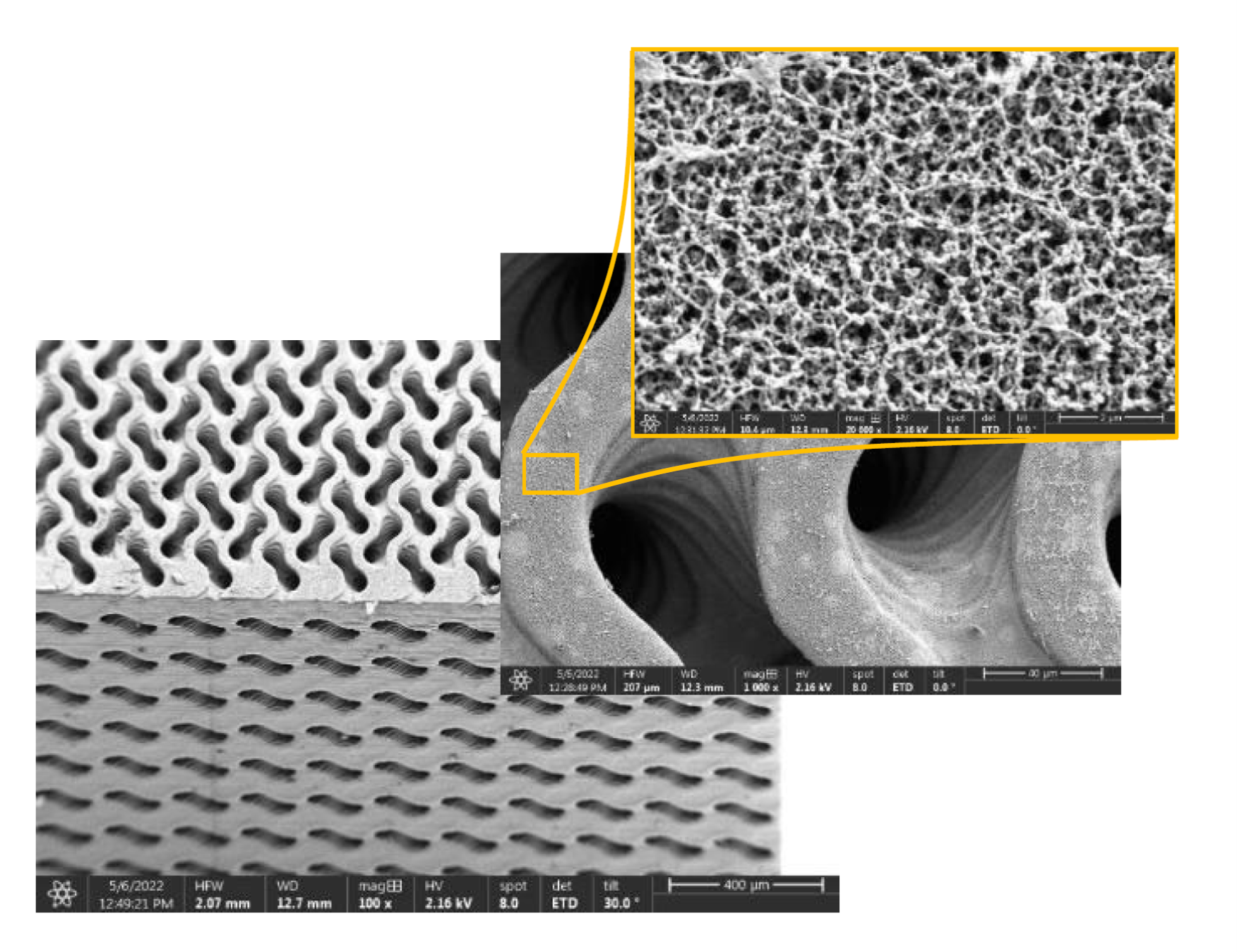There is a plethora of industrial and medical applications that utilize membranes. Ideal characteristics of membranes include high porosity and high membrane surface area per packing volume (for high filtration or separation rates), narrow pore size distribution (for high solute selectivity), low-tortuosity and thin cross-section (to minimize solute adsorption in membrane pores) and excellent antifouling properties (to minimize membrane clogging).
The morphology of commercial membranes is still far from ideal since it is based on thick two-dimensional structures with broad pore size distribution and long tortuous pore geometries. As an example, currently available polymeric membrane-based hemodialysis systems (i.e., Renal Assist Device, RAD) require a bulky extracorporeal circuit with peristaltic pumps to provide enough driving pressure for effective hemofiltration. The drawback of this workaround is it prevents the development of miniaturized and implantable RADs for end-stage renal disease. In addition to the insufficient permeability, proteins in the blood adsorb to the membrane, clogging up the pores, thus presenting another critical issue for hemodialysis. Clearly, there is a great need for developing innovative membrane architectures with precise selectivity, high flux, and ultra-low fouling properties.
LLNL researchers have developed novel advanced manufactured biomimetic 3D-TPMS (triply periodic minimal surface) membrane architectures such as a 3D gyroid membrane. The membrane is printed using LLNL's nano-porous photoresist technology. LLNL’s 3D-TPMS membranes consist of two independent but interpenetrating macropore flow channel systems that are separated by a thin nano-porous wall. 3D-TPMS membranes can be printed using any 3D printer technology, provided they have the required resolution and appropriate maximum print size (from cubic centimeters to cubic meters). Suitable 3D printing technologies include but are not limited to Projection Micro Stereolithography (PμSL), Direct Ink Writing (DIW), Selective Laser Sintering or Melting (SLS or SLM) powder bed methods. Using LLNL’s porous photoresist technology, the design and synthesis of photoresist monomers also allows for the integration of additional membrane functionalities.
Image Caption: SEM images of printed TPMS membrane structures using nanoporous photoresist
LLNL’s advanced manufactured 3D-TPMS membrane design offers:
- a higher membrane area (compared to that of conventional one or two-dimensional membrane designs for the same volume).
- a high-porosity membrane wall for enhanced mass transport (up to 95% porosity compared to 20-70% of current state-of-the-art designs).
- integrated forced mixing of both gas and liquid streams by the branching nature of the flow channels defined by the TPMS can boost the filtration efficiency by actively mixing the liquid flowing through the flow channels (even under laminar flow conditions) thus maximizing the concentration gradient driven mass transport across the membrane wall.
- Synthesis of photoresist monomers allows for the integration of additional membrane functionalities including improving anti-fouling properties and blood compatibility, and/or pore size optimization for selectivity and permeability.
- potential for creating metallic TPMS membranes using dealloying phase separation methods.
- Hemodialysis
- CO2 capture
- Cross flow filtration of biofluids or cell culture
- Heat exchangers
Current stage of technology development: TRL 3


